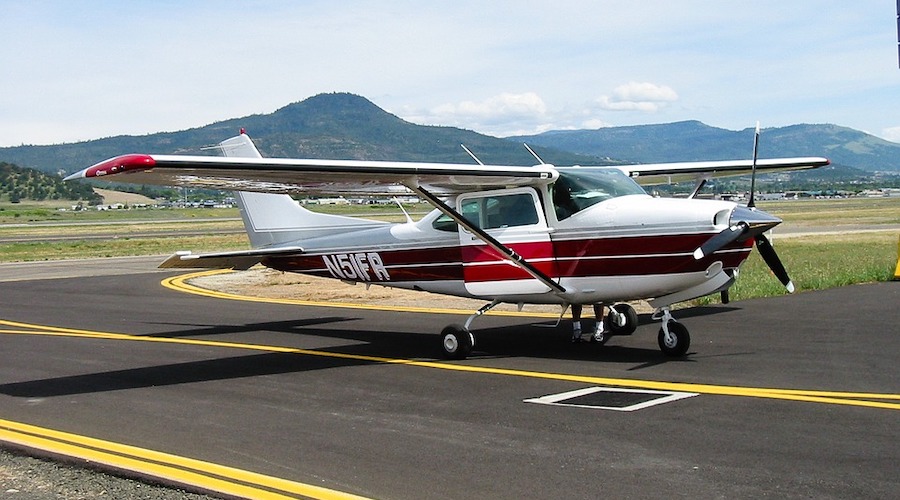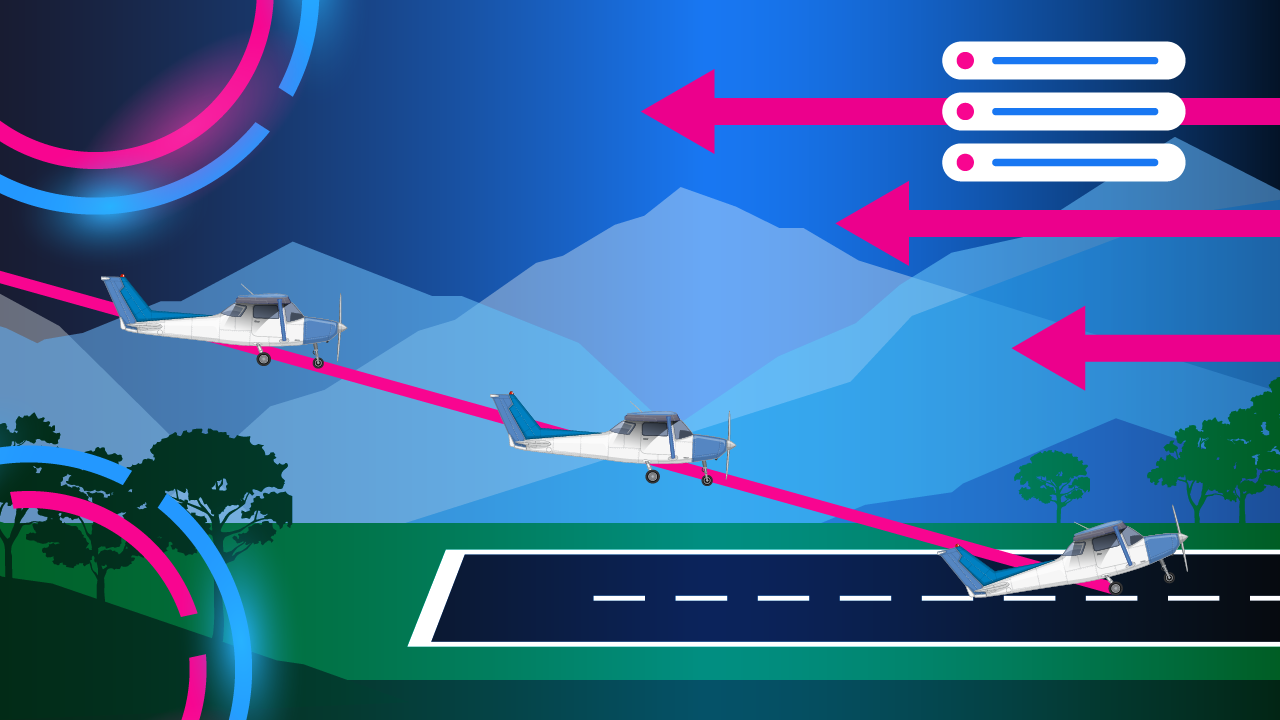We’ve all been there. You need to calculate when and how quickly you need to descend—so much math, not enough time. Luckily, in this article, we’ll clearly explain two rules of thumb that will allow you to calculate your Top of Descent (TOD) and your Rate of Descent (ROD) so that you can make descents that would make your instructor proud!
The Three-Degree Glideslope
The following rules of thumb calculations will assume a three-degree glideslope.
A three-degree glideslope refers to the angle of descent an aircraft will use. In other words, the angle between the flight path and the ground. The larger the angle, the steeper the descent, and the higher the rate of descent. A commercial aircraft will typically descend at between 1,500 and 3,000 feet per minute. The Space Shuttle, the most inefficient glider of its time, used a far larger descent angle, descending at 10,000 feet per minute (enough to make you pay attention to the fasten seatbelt sign).
The three-degree glideslope is the international standard for the final approach path of an aircraft and will allow for a smooth, stable descent.
Two conditions need to be determined to descend at a three-degree glideslope and arrive at your intended waypoint at the correct altitude:
- Top of Descent
- Rate of Descent
Determining Top of Descent

The first step to simply calculating your descent is determining where it should begin, known as the “Top of Descent” (TOD). It is important to note that the TOD is where your descent should begin, not where you should initiate the descent. Aircraft have inertia (thanks, Mr. Newton), and as a result, you will have to initiate the descent before your TOD, allowing the aircraft to begin descending at the TOD.
To determine your TOD:
- Determine your current altitude (or the initial altitude for your descent.) For our example, 10,000 feet.
- Subtract the altitude you want to arrive at once your descent is completed. If this is ground level, use elevation. For our example, 3,000 feet.
Therefore, in our example: 10,000 – 3,000 = 7,000.
- Multiply this number by three, and divide by 1,000. In other words, remove three zeros.
Therefore, in our example:
7,000 ÷ 1000 = 7
7 x 3 = 21
You will therefore begin your descent 21 nautical miles from your arrival point. Easy!
But how quickly will you descend?
Determining Rate of Descent
To determine the required Rate of Descent (ROD) for a three-degree glideslope, simply multiply your groundspeed by 5.
For our example, we’ll use 80 knots.
Therefore: 80 x 5 = 400
An easier, pilot-friendly way to quickly make a multiplied by five calculation is to divide your groundspeed (or any number) by two and add a zero to the end of the number.
For example:
80 ÷ 2 = 40
40, add a zero to the end = 400.
Magic.
But What About Wind?
If only nature wouldn’t mess with our mathematics…
Wind, by its very nature, is dynamic. Wind speed and direction vary with height, meaning as you descend, your groundspeed will change, bringing you either further or closer to your arrival point than you calculated, as your rate of descent (should have) remained constant.
Generally speaking, if your descent is shorter, for example, a few thousand feet, the change in wind speed and direction will not be significant enough to make a noticeable difference.
If your descent is more prolonged, for example, 10,000 feet, there is a good chance that the wind will be significantly different by the time you arrive at the arrival point.
Luckily, there are two ways of mitigating these potential errors:
1. Maintain a constant groundspeed.
As you descend, monitor your groundspeed, and adjust your Indicated Airspeed (IAS) accordingly while maintaining a constant Rate of Descent (ROD). Although possible, this is a very tedious exercise because you will have to constantly adjust airspeed and power settings during the descent, depending on how significant the change in wind speed or direction will be.
2. As you descend, apply the rules again.
For example, you are descending from 16,000 feet to 3,000, and your groundspeed is 100 knots. Try to calculate the Top of Descent (TOD) and Rate of Descent (ROD) by yourself before looking at the example below.
TOD:
16,000 – 3,000 = 13,000
13,000 ÷ 1,000 = 13
13 x 3 = 39
TOD = 39 nautical miles.
ROD:
100 x 5 = 500 or (100 ÷ 2 = 50 add a zero = 500)
ROD = 500 feet per minute.
As you descend, you notice the tailwind has increased, causing your groundspeed to increase to 120 knots, so you have to recalculate.
Choose an altitude you will pass soon (but not too soon, you need to do the math first!). Let’s say you are passing 7,000 feet at 500 feet per minute, so you choose 6,500 feet, giving you one minute to make the calculations, which is more than enough time.
Now simply run the calculations using your new groundspeed and altitude.
You now determine that your new TOD for a three-degree glideslope is 10.5 nautical miles, and your rate of descent will be 600 feet per minute.
Beautiful.
Conclusion
These rules are used more often than you think, even in larger aircraft. Aviation is a dynamic environment where it is sometimes more efficient to make a quick rule of thumb calculation than input data into a computer. Often, these rules are used to initiate a descent, allowing time to input data into the computer at a later stage.
But, although incredibly useful, these are only rules of thumb. As much as we try, the aircraft’s computers will always be better and faster at math than pilots. When practicable, use the onboard systems to make descent profile calculations.
In summary:
Top of Descent (TOD)
Current altitude 10,000 feet – final altitude/elevation 3,000 feet = 7,000 feet.
7,000 feet ÷ 1,000 = 7
7 x 3 = 21
TOD = 21 nautical miles from arrival point.
Rate of Descent (ROD)
Groundspeed x 5.
Or
Groundspeed ÷ 2 and add a zero at the end.




